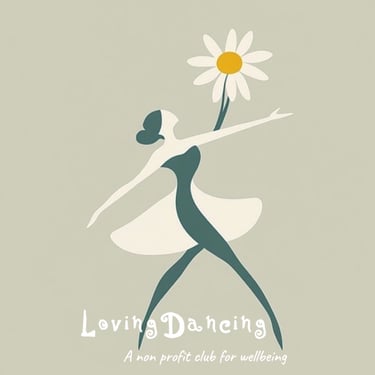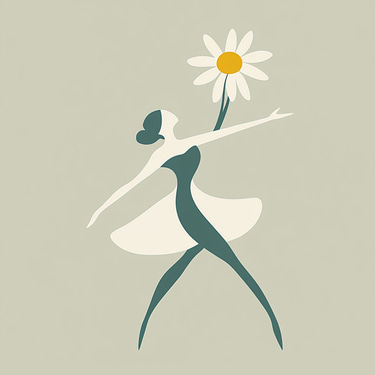A Practical Guide to Choosing the Perfect Colors for Your Ballet Attire
Choosing wrong colors or colors we like but not match, might make us look washed out, blending into the background, or even a fashion identity crisis. BUT, choosing the right colors for ballet attire is essential not just for aesthetics but also for boosting confidence, enhancing performance, and expressing our individuality.
WE LOVE FASHION :)
Mrs. DL
10/30/20244 min read


Introduction to Ballet Attire Colors
Ballet, often viewed as a quintessential art form, emphasizes not only skill and technique but also the aesthetic appeal of the dancer's attire. Selecting the appropriate colors for ballet attire is crucial, as these choices not only influence how the dancer is perceived but also can affect their performance. This guide aims to assist dancers and their guardians in navigating the vibrant palette available for ballet costumes.
Understanding Color Symbolism in Ballet
Colors carry profound meanings and histories, especially within the realm of performance arts. Wearing specific colors can convey emotions, themes, or character traits. For example, traditional ballet attire often features pastel colors such as pink and lavender, suggesting innocence and grace. In contrast, vivid tones like red or deep blue may indicate passion and strength, ideal for character roles that demand a more dynamic presentation. Recognizing the symbolic weight of colors can significantly enhance a dancer's portrayal on stage.
Selecting Colors Based on Skin Tone and Hair Color
Finding the perfect colors for ballet attire extends beyond mere preference; it requires consideration of the dancer's unique complexion and features. For instance, dancers with warm undertones may find that earthy hues, such as caramel or olive green, complement their skin better than cooler tones. Conversely, those with cool undertones might look radiant in shades of blue or violet. Additionally, hair color plays a pivotal role in this selection process. A dancer with blonde hair might shine in bright pastels, while those with darker hair could sport bolder colors with more intensity. Understanding these aspects can help make informed decisions to enhance the overall visual impact of the performance.
Practical Tips for Pairing Colors
When assembling a ballet outfit, it's essential to harmonize colors to create a cohesive appearance. Start by selecting a dominant color that speaks to the intended theme or emotion of the performance. Once the primary color is chosen, consider complementary shades that can be used for accessories, tights, or footwear. It's often beneficial to follow a simple rule: if you choose a bold, bright color, balance it with softer tones to avoid overwhelming the viewer. Moreover, always keep in mind the performance venue and lighting conditions, as these can alter the perception of colors and ultimately affect how the dancer stands out on stage.
Quick Guide to Finding Your Perfect Colors for Ballet Attire
Are you ready to enhance your ballet wardrobe with colors that make you shine? Discovering the hues that suit you best is simpler than you might think. Let’s dive into some easy methods to determine your ideal color palette, especially for your ballet costumes!
1. Determine Your Skin Tone: Warm or Cool?
1.1. Vein Test: Find a well-lit spot and take a look at the veins on your wrist:
Blue or Purple Veins: You likely have a cool skin tone.
Greenish Veins: You’re probably warm-toned.
1.2. Jewelry Test: Try wearing both gold and silver jewelry:
Gold Looks Better: Your skin tone is likely warm.
Silver Looks Better: You’re likely cool-toned.
1.3. White Paper Test: Hold a white sheet of paper next to your face:
Yellow or Olive Undertones: You’re warm-toned.
Pink or Blue Undertones: You’re cool-toned.
2. Choose Colors that Suit Your Tone
For Cool Skin Tones: Embrace cool shades like blues, purples, cool pinks, and silver grays. You can also opt for reds with blue undertones to complement your complexion.
For Warm Skin Tones: Lean into warm shades like oranges, corals, warm reds, beige, and browns. Colors with a yellow base will also flatter your skin.
3. Differentiate Between "Favorite Colors" and "Flattering Colors"
We often gravitate towards colors we love, but those may not always enhance our natural beauty. Here’s a simple way to distinguish:
Favorite Colors: The shades you naturally reach for.
Flattering Colors: The hues that make your skin glow, minimize dark circles, and enhance your overall radiance.
4. Applying This to Your Ballet Attire Choices
4.1. Stage Costumes: When selecting costumes for performances, consider how colors will appear under stage lighting and complement your makeup:
Cool Skin Tones: Opt for ballet attire in soft pinks, purples, blues, and grays for an elegant look on stage.
Warm Skin Tones: Choose warm pinks, corals, beiges, and golds to radiate warmth and vitality.
4.2. Daily Training Wear: For your everyday practice wear, while you can have more fun with colors, it’s still beneficial to choose shades that flatter your skin tone:
Cool Skin Tones: Go for refreshing shades like gray, bluish purple, or light pink to brighten your appearance.
Warm Skin Tones: Consider warm grays, cream, beige, or coral pinks for a soft and approachable look.
4.3. Matching Ballet Shoes and Socks: Select ballet shoes and tights that closely match your skin tone, whether cool or warm. This creates the illusion of longer legs and enhances the visual appeal of your performance.
Conclusion
Finding your perfect colors is a fun and rewarding process! By quickly determining your skin tone and testing out different shades, you can confidently choose ballet attire that not only showcases your personal style but also highlights your natural beauty and grace. Get ready to dance in colors that truly reflect who you are!
Choosing the right colors for ballet attire is a thoughtful process that requires consideration not only of personal characteristics, but also the symbolic meanings of colors, and practical aesthetics. By employing the guidelines in this guide, dancers can discover hues that not only enhance their performance but also express their individuality. An informed approach to selecting ballet costume colors can make all the difference, ensuring each of us shines brightly in their unique light on stage, in training and in daily life.
DancingLoving - your non profit association for holistic wellbeing
mrs.dancingloving / Mrs. DL


Spotify: community music & podcast sharing
WhatsApp: open community
Instagram: mrs.dancingloving
LinkedIn & Facebook: stay tuned!
Newsletter: sign in in "contact"
